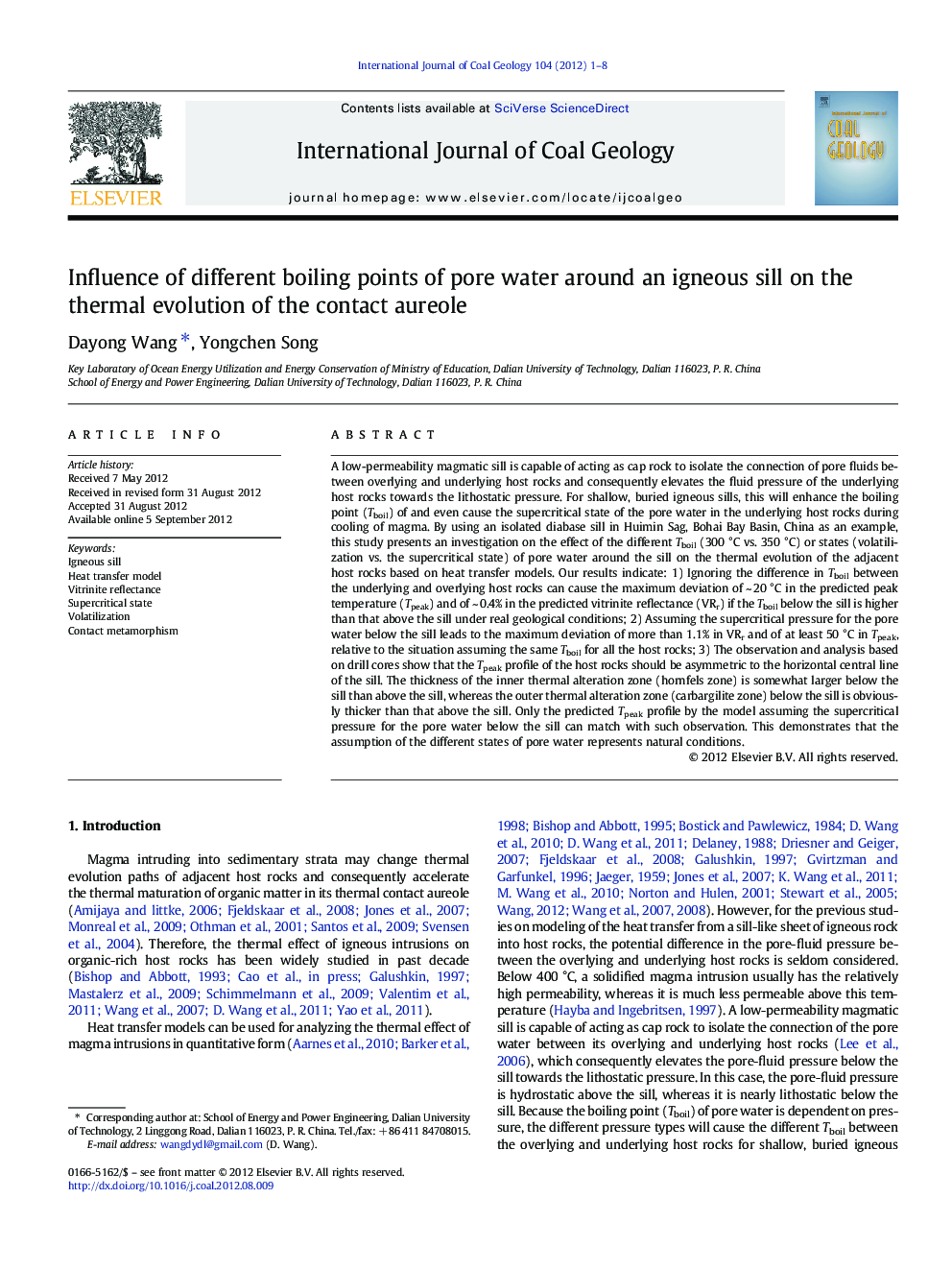| Article ID | Journal | Published Year | Pages | File Type |
|---|---|---|---|---|
| 1753517 | International Journal of Coal Geology | 2012 | 8 Pages |
A low-permeability magmatic sill is capable of acting as cap rock to isolate the connection of pore fluids between overlying and underlying host rocks and consequently elevates the fluid pressure of the underlying host rocks towards the lithostatic pressure. For shallow, buried igneous sills, this will enhance the boiling point (Tboil) of and even cause the supercritical state of the pore water in the underlying host rocks during cooling of magma. By using an isolated diabase sill in Huimin Sag, Bohai Bay Basin, China as an example, this study presents an investigation on the effect of the different Tboil (300 °C vs. 350 °C) or states (volatilization vs. the supercritical state) of pore water around the sill on the thermal evolution of the adjacent host rocks based on heat transfer models. Our results indicate: 1) Ignoring the difference in Tboil between the underlying and overlying host rocks can cause the maximum deviation of ~ 20 °C in the predicted peak temperature (Tpeak) and of ~ 0.4% in the predicted vitrinite reflectance (VRr) if the Tboil below the sill is higher than that above the sill under real geological conditions; 2) Assuming the supercritical pressure for the pore water below the sill leads to the maximum deviation of more than 1.1% in VRr and of at least 50 °C in Tpeak, relative to the situation assuming the same Tboil for all the host rocks; 3) The observation and analysis based on drill cores show that the Tpeak profile of the host rocks should be asymmetric to the horizontal central line of the sill. The thickness of the inner thermal alteration zone (hornfels zone) is somewhat larger below the sill than above the sill, whereas the outer thermal alteration zone (carbargilite zone) below the sill is obviously thicker than that above the sill. Only the predicted Tpeak profile by the model assuming the supercritical pressure for the pore water below the sill can match with such observation. This demonstrates that the assumption of the different states of pore water represents natural conditions.
► Ignoring the difference in Tboil around a sill causes minor model deviation. ► Ignoring supercritical pressure below a sill causes obvious model deviation. ► Supercritical state causes much thicker thermal alteration zone below a sill. ► Core analysis shows capability of sills as cap rock to elevate pore pressure.
